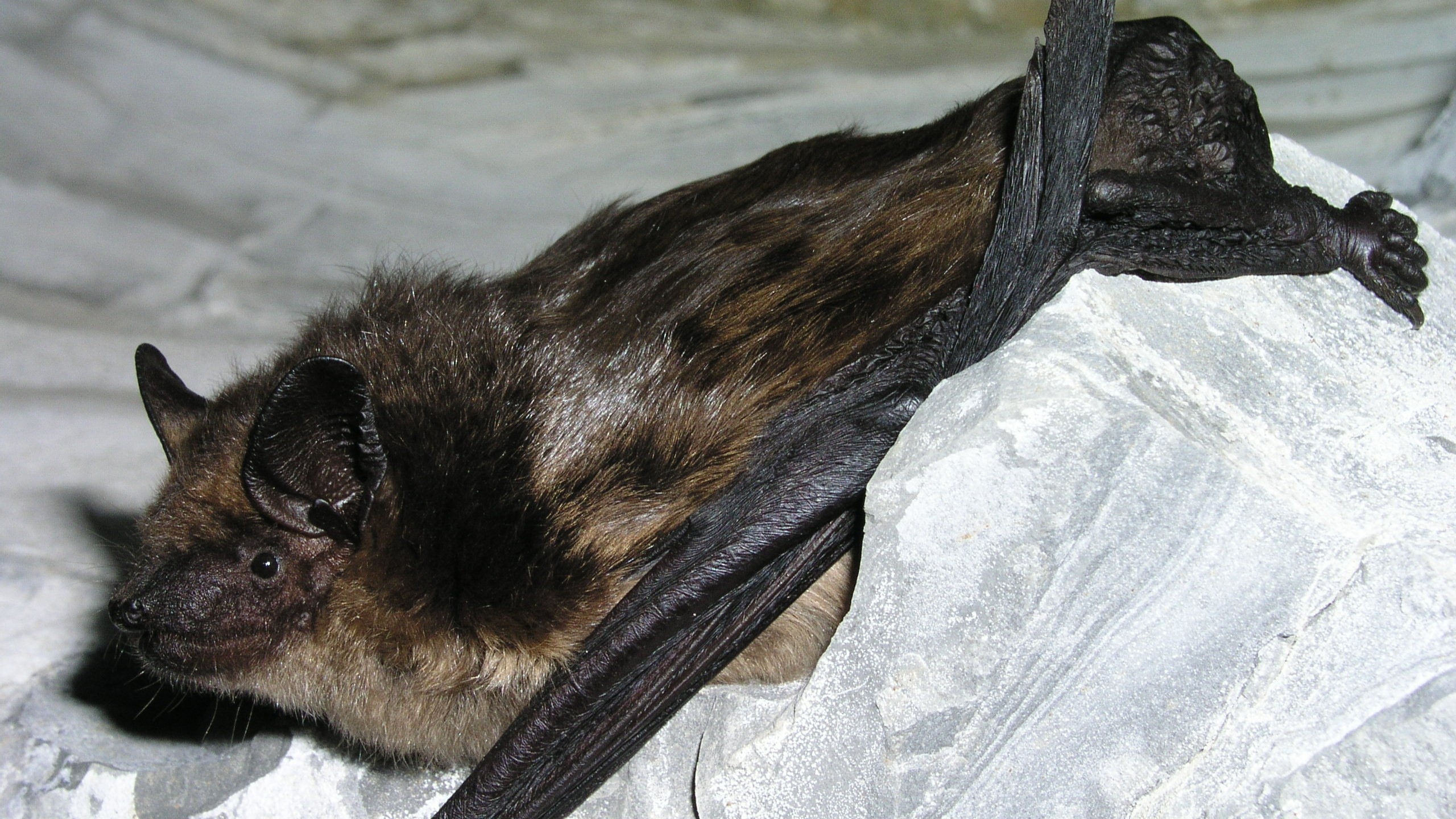Bats with weirdly giant penis have sex for up to 12 hours in a way never seen in mammals before
Serotine bats that have penises seven times longer and wider than their female counterparts' vaginas are the first known mammals to engage in non-penetrative sex.
Bats with "disproportionately large" penises that don't fit inside the females' vaginas are the only mammals known to have sex without penetration, scientists have discovered.
Mammals usually mate via penetrative sex, but serotine bats (Eptesicus serotinus) have evolved a different strategy. Instead of inserting their penis into the female's vagina, males use their oversized genitalia to push aside their partner's tail sheath, before pressing up against her vulva for up to 12 hours, according to a study published Monday (Nov. 20) in the journal Current Biology.
"We had observed that these bats have disproportionately long penises, and we were always wondering 'how does that work?'," lead author Nicolas Fasel, a postdoctoral researcher and evolutionary biologist at the University of Lausanne in Switzerland, said in a statement shared with Live Science.
It turns out, it doesn't work — at least not like in other mammals. Their penises are seven times longer and wider than the females' vaginal openings when erect, making post-erection penetrative sex impossible.
"We thought maybe it's like in the dog where the penis engorges after penetration so that they are locked together," Fasel said. "Or alternatively maybe they just couldn't put it inside, but that type of copulation hasn't been reported in mammals until now."
Related: 10 phallic flora and fauna that look just like penises
Fasel and his colleagues analyzed footage from cameras they had placed on a grid that the bats could climb, and where the animals' genitalia were visible during copulation. They recorded a total of 97 mating events in the attic of a Dutch church and in a bat rehabilitation center in Ukraine. None of the sex sessions appeared to involve penetration.
Get the world’s most fascinating discoveries delivered straight to your inbox.
Instead, the footage showed males grasping females by the nape and moving their pelvis until their erect penis was pushed firmly against their partner's vulva. The males then remained completely still in this embrace for an average of 53 minutes, with the longest interaction lasting almost 13 hours.
The researchers noted the penises were enlarged before coming into contact with the vulva, excluding the possibility of even pre-erection penetration, which is known to occur in dogs.
The team also measured and described the erect penises of live serotine bats. These animals develop erections under anesthesia, according to the statement, enabling researchers to document a "heart-shaped" swelling at the tip of the penis.
"The terminal swelling was adorned with a few short hairs and composed of two large erectile tissues," the researchers wrote in the study. "We postulate that the hair present on the terminal swelling serves as a sensor to assist in finding the vulva."
Serotine bats may have evolved an oversized penis so they could push aside a membrane that covers the females' genitals. "Bats use their tail membranes for flying and to capture the insects [they eat], and female bats also use them to cover their lower parts and protect themselves from males," Fasel said. "But the males can use these big penises to overcome the tail membrane and reach the vulva."
The fur on female bats' abdomens appeared wet after mating, indicating the presence of semen, but samples are needed to confirm that males ejaculate during the long embrace, according to the study.
This is the first documented evidence of non-penetrative sex, also known as "contact mating," in mammals. This behavior has been described in birds, however, and involves males and females pressing together openings called cloacae to perform "cloacal kisses," resulting in a transfer of sperm.
To better describe the mating behavior of serotine bats, Fasel and his colleagues "are trying to develop a bat porn box, which will be like an aquarium with cameras everywhere," he said.

Sascha is a U.K.-based staff writer at Live Science. She holds a bachelor’s degree in biology from the University of Southampton in England and a master’s degree in science communication from Imperial College London. Her work has appeared in The Guardian and the health website Zoe. Besides writing, she enjoys playing tennis, bread-making and browsing second-hand shops for hidden gems.




